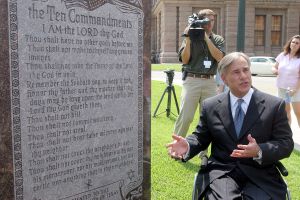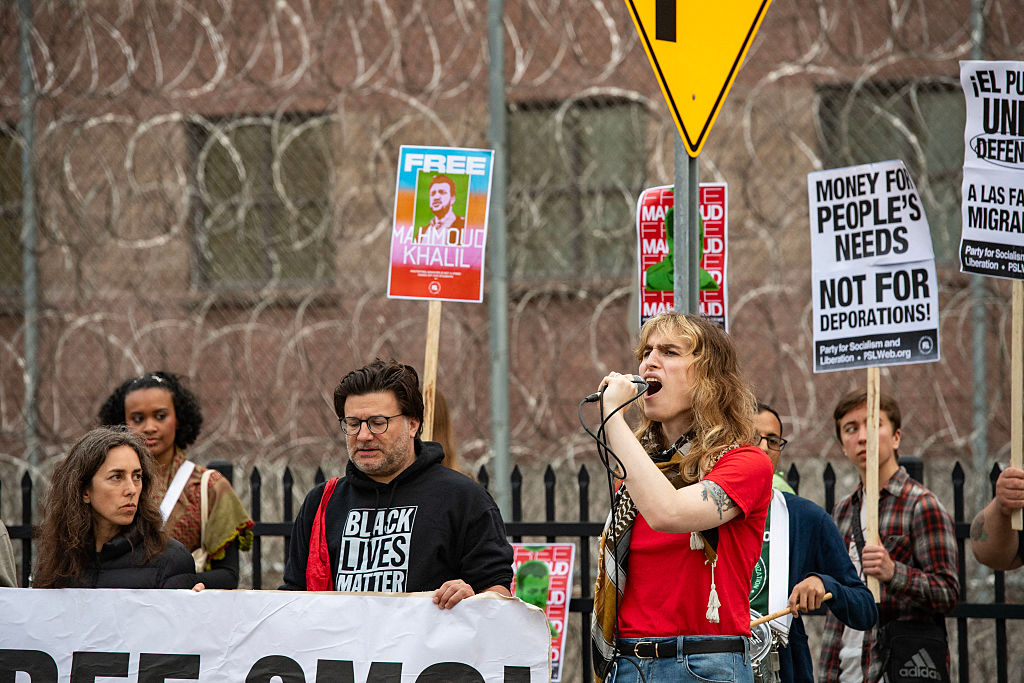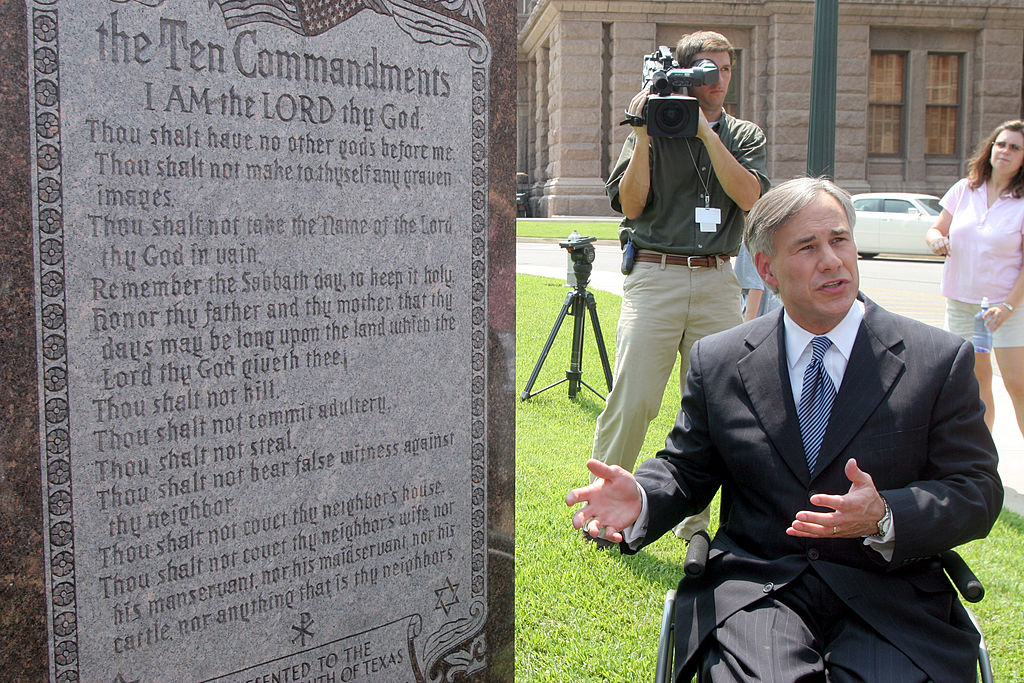Nearly every institution in the United States — from large corporation to rural libraries, universities to sports teams — has embraced the cult of identity, “a ramshackle creed that maintains, for example, that the term ‘Latinx’ signifies an actual human group,” Martin Gurri writes in City Journal. “Once the province of pretentious professors and their captive students, the cult has leaked out of the cannabis-scented halls of academia to infect an astonishing number of people in power.”
What is oddest about this phenomenon, Gurri continues, is that the cult of identity is inescapably incoherent:
Fashionable French philosophers hover in the background, yes, and there’s a dash of vulgar Marxism for seasoning, but the curious inquirer will encounter far more mystery than logic and far more zeal than programmatic thinking. Once removed from the realm of mysticism, the whole identity edifice collapses like that condo in Surfside, Florida, from its own structural inadequacies.
Let me cite just two internal contradictions, both seemingly fatal. The first concerns the numerology of identity. It is a dogmatic assertion of the cult that outcomes must be at least proportionate to population. If blacks represent 13 percent of the country’s population, there must be at least 13 percent black CEOs, black Ivy League professors, black New York Times columnists, black Google employees, and so on.
But given that victim groups are both unstable and overlapping, this mathematical quest breaks down almost immediately. Every person who is black and “cisgender” (that is, they identify with the sex that biology makes them) and male presents an insoluble dilemma, unless we opt for dismemberment. Yang’s successor ideology has no way to reconcile conflicting identity claims; they can be adjudicated only by a power that stands outside the system.
The second contradiction is even more decisive. Identity as a sectarian faith genuflects before conflicting human ideals. It affirms that anyone can become anything — even, at its most exuberant, that everyone can become everything. This tendency proliferates pronouns and aims to obliterate standards and differences: between citizen and alien, for example, or between being a man and being a woman. It’s all personal choice, with life pared down to an extreme utopian individualism.
At the same time, we are told that the only meaningful human unit is the identity group, whose borders are fortified and must be defended at all costs. This tendency magnifies and sanctifies difference, until identity becomes destiny. Every conversation begins with the words “As a gay person” or “As a Latinx” because group experiences are taken to be incommensurable. All products and tokens of the group are to be shielded from profanation. White boys must never grow dreads or sing the blues: that’s “appropriation,” not admiration, and the minimum penalty is a virtual lashing on the web.
More: “No doctrine in the world can reconcile a radical individualism with such an uncompromisingly tribal perspective. The cult of identity, taken neat, appears as a gigantic conflict-generation machine, demanding constant outside intervention and tinkering just to keep the parts from blowing off into the ether.”
A recent example of that constant outside intervention — or attempted intervention — is the Laurie Penny pronoun spat between her publisher, Bloomsbury, and the Critic magazine.The Critic published a negative review of Penny’s book, Sexual Revolution: Modern Fascism and the Feminist Fightback. In the review, Penny was referred to as “she” because she is a woman, not by her preferred pronoun “they.” Bloomsbury demanded the review be changed. The Critic refused. Olivia Hartley, The Critic’s publisher, wrote: “The Critic exists to push back against a self-regarding and dangerous consensus that finds critical voices troubling, triggering, insensitive and disrespectful. The point is not provocation or trolling… we would not expect any of our contributors to have change their language to suit the ever-changing beliefs of other people.” Good for Hartley.
In other news
The Smithsonian to return collection of Benin bronzes to Nigeria:
In a decision that could mark a turning point in the growing restitution movement, the Smithsonian Institution announced on March 8 that it will repatriate to Nigeria nearly all of the thirty-nine Benin bronzes held in its collection. Many of the objects are believed to be part of the trove of some 90,000 brass, bronze, and ivory items looted from the Republic of Benin, as Nigeria was then known, in 1897 by British troops and dispersed across the Continent and then to parts west. The Smithsonian legally owns the objects, the majority of which arrived at the museum through donations over a span of decades.
Ukrainians in race to save cultural heritage: “Many believe destruction of cultural assets is part of Kremlin strategy to ‘erase’ Ukraine as independent sovereign state.”
Gary Saul Morson criticizes the canceling of Russian artists and the use of the phrase “moral clarity”: “When an issue is declared ‘morally clear’ in this way, the implication is that only the immoral could entertain the slightest doubt. The world divides neatly into good and evil. There can be no conscientious skeptics. And when people are unqualifiedly evil, anything one says about them or does to them becomes justified. As a specialist in Russian literature and thought, I am more than familiar with this way of thinking. It is how the Soviet Union operated.”
Chloë Ashby reviews María Gainza’s Portrait of an Unknown Lady: “A detective novel of sorts, this second novel is set in the Buenos Aires art world. It follows an unnamed young woman who lands a job in the fine art valuations department of Ciudad Bank as the ‘personal slave’ of Enriqueta Macedo, the country’s pre-eminent expert in art authentication. Over conversations in a sauna, Macedo spills her secrets about passing off fake paintings as genuine, and after she dies a mysterious death, our protagonist becomes obsessed with finding the great counterfeiter Renée.”
David Hein writes about the great books of the Great War in Modern Age:
If readers of Erich Maria Remarque’s bestseller All Quiet on the Western Front (1928; English translation, 1929) — or viewers of the film (winner of the Academy Award for Best Picture, 1930) — came away from their experience believing that most soldiers in combat on the Western or Eastern front shared the trauma and pacifism of the main character, Paul Bäumer, an enlisted man in the German army, then they were probably mistaken. Most soldiers on both sides not only accepted privation and endured the terrible stress of combat, they also believed in the morality of their nation’s fight and were committed to prevailing over their enemies. Concentrating on the negative effects of the war while underrepresenting the motivations and resolve of its participants, the classic literature of World War One is historically unbalanced in tone and emphasis.
T.S Eliot, war correspondent:
The latest volume in this magnificent edition of T.S. Eliot’s letters, inaugurated by his widow and now proceeding in the expert hands of John Haffenden, covers three especially important years in his life. January 1939 saw the last number of the Criterion, the periodical to which Eliot had devoted much of his energy for sixteen years. He was justly proud of its many achievements — Proust, Cocteau and Valéry, among others, had first appeared in English in its pages — but he felt jaded and increasingly doubtful of its function in darkening times: “if the situation is hopeless, then the continuation of anything like the Criterion served no purpose except to disguise the hopelessness,” as he wrote to one correspondent. But as the storm clouds continued to gather, he had more than enough to occupy him: he continued to nurture the extraordinarily starry poetry list he had built up at Faber and to work on many other titles besides; his new play The Family Reunion was staged in March and published shortly afterwards; and he gave a weighty lecture series in Cambridge which would be published as The Idea of a Christian Society in the autumn, just a few days after the somewhat less weighty Old Possum’s Book of Practical Cats. By the time that odd pairing of titles had appeared on the Faber list, war had broken out and Eliot, like everyone else, was abruptly adjusting to a new life of blackouts, air raid warnings and shortages — of which the shortage of paper was, for a publisher, not the least testing. He enrolled as a trainee Air Raid Precaution warden and endured long lectures about stirrup pumps, though the main lesson he passed on to John Hayward was less technical: “The first thing to do, when you hear the Syrens, or the gun fire preliminary… is to have a good Piss: after that you are ready for the Jerry”.
Joseph Epstein revisits the work and lives of Johanna Kaplan and Bette Howland:
One summer, when I was going off on a two-week vacation with my own sons, I offered Bette and her boys the use of my Evanston apartment, which was only three short blocks from Lake Michigan. She was, she told me, delighted to have it. When I returned, my kitchen sink had somehow turned orange, the sheets were off my bed with a note of apology from Bette for her not having had time to launder them, my older son’s baseball glove was missing, and an open and half-eaten can of tuna was in the refrigerator with another note that read, “In case you’re hungry when you return.” When I published my first book, Divorced in America (1974), I gave Bette a copy, signed, “To Bette, In Friendship, Joe.” Two or three years later I found this signed copy for sale in a used bookshop and have ever since regretted not returning it to Bette with the postscript, “Still friends.” She would, I like to think, have appreciated the joke.
























